Document Author
Year Published
Topic
- Reports, Evaluations, Best Practices, Surveys (7) Apply Reports, Evaluations, Best Practices, Surveys filter
- Research (7) Apply Research filter
- 100% Access to Justice (6) Apply 100% Access to Justice filter
- Best Practices for Self-Help Centers (4) Apply Best Practices for Self-Help Centers filter
- Map Gallery (4) Apply Map Gallery filter
- Self-Help Centers (4) Apply Self-Help Centers filter
- Trial Court Self-Help (4) Apply Trial Court Self-Help filter
- Justice Tech Entrepreneurs (3) Apply Justice Tech Entrepreneurs filter
- Reports (3) Apply Reports filter
- Technology (3) Apply Technology filter
- Unbundling (3) Apply Unbundling filter
- Best Practices (2) Apply Best Practices filter
- Courts (2) Apply Courts filter
- Evaluating a Self-Help Center (2) Apply Evaluating a Self-Help Center filter
- Legal Aid (2) Apply Legal Aid filter
- Linking a Self-Help Center to Other Services (2) Apply Linking a Self-Help Center to Other Services filter
- Managing a Self-Help Center (2) Apply Managing a Self-Help Center filter
- Starting a Self-Help Center (2) Apply Starting a Self-Help Center filter
- Strategic Planning (2) Apply Strategic Planning filter
- Surveys (2) Apply Surveys filter
- Tools for Evaluating Self-Help Programs and Services (2) Apply Tools for Evaluating Self-Help Programs and Services filter
- Working Groups (2) Apply Working Groups filter
- Academic Libraries (1) Apply Academic Libraries filter
- Articles & SRLN Briefs (1) Apply Articles & SRLN Briefs filter
- ATJ Commissions (1) Apply ATJ Commissions filter
- Conferences & Summits (1) Apply Conferences & Summits filter
- Consumer Adoption (1) Apply Consumer Adoption filter
- Court Navigators (1) Apply Court Navigators filter
- Evaluation (1) Apply Evaluation filter
- Law Libraries (1) Apply Law Libraries filter
- LEP and Access (1) Apply LEP and Access filter
- Libraries (1) Apply Libraries filter
- Maps (1) Apply Maps filter
- Monitoring and Evaluation Strategies (1) Apply Monitoring and Evaluation Strategies filter
- Online Dispute Resolution (1) Apply Online Dispute Resolution filter
- Plain Language & LEP (1) Apply Plain Language & LEP filter
- Presentations (1) Apply Presentations filter
- Public Libraries (1) Apply Public Libraries filter
- Research about Court Navigators (1) Apply Research about Court Navigators filter
- Working Group Content (1) Apply Working Group Content filter
State
Region
- (-) Remove United States filter United States
Tags
Post date
Search results

Report: Securing Stability: Legal Aid's Lasting Impact (The Center for Community Solutions 2019)
Legal Aid Society of Cleveland and Community Legal Aid teamed up to hire The Center for Community Solutions (CCS) to survey former clients of the two non-profit law firms. Of the 1,250 individuals from 13 counties in Northeast Ohio who responded more than ...
Paper: Courts Need to Provide Access to Justice in Rural America (COSCA 2018)
In a detailed policy paper entitled, Courts Need to Provide Access to Justice in Rural America, and published in 2018 by the Conference of State Court Administrators, readers will find a thoughtful analysis of how rural courts can expand access and suppor ...
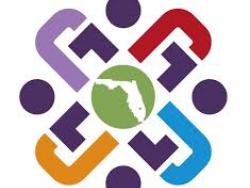
Report: Measuring Online Legal Resources: A Framework Inspired by the Drake Equation (Florida Justice Technology Center 2018)
This report and companion webinar offer a framework to measure access to justice, and whether specific interventions have made an impact. For more information and resources about the Drake Equation for Access to Justice Work, please visit the Florida Just ...
Resource: Illinois Supreme Court Commission on Access to Justice Uses SRLN Maps for Statewide Strategic Planning
The Illinois Supreme Court Commission on Access to Justice has started using the SRLN demographics maps for presentations to circuit clerks, circuit court judges, civil legal aid and pro bono practitioners. “The maps helped provide context for why access ...

Tool: CA Self-Help Centers' Self-Assessment Tool for Quality Programs (CA Courts 2018)
The California Self-Help Centers’ Self-Assessment Tool for Quality Programs was developed as a strategic and tactical planning template to promote quality Self-Help Center Programs across California. The tool is designed to connect a wide range of initiat ...
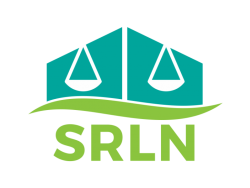
Document: Founding Document of SRLN (SRLN 2005)
Self Represented Litigation Network- Memorandum of Understanding (November 2005) I. Establishment and Name of Network The signatories of this MOU agree to establish an informal network to be known as the Self Represented Litigation Network. The ...
Guide: Family Court ADR Program Best Practices (Maryland Courts 2004)
This document was developed by Maryland Circuit Court Family Division and Family Services Program family support services coordinators, administrators, and ADR professionals along with members of Maryland’s Mediation and Conflict Resolution Office (MACRO) ...
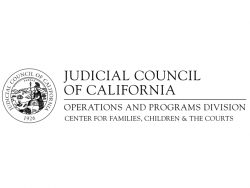
Guide: Guidelines for the Operation of Self-Help Centers in California Trial Courts (California 2011)
The Administrative Office of the Courts, in collaboration with judges, court executive officers, attorneys, and other parties with demonstrated interest in services to self-represented litigants, is charged with the development of these guidelines for dis ...
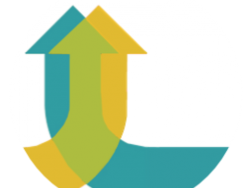
Report: Language Access Innovations in Courts (Legal Design Lab 2019)
In a study for the California Judicial Council, Stanford University's Legal Design Lab evaluated how technology, such as the use of tablets and Google Translate, might improve court access for visitors of Limited English Proficiency (LEP). Language A ...
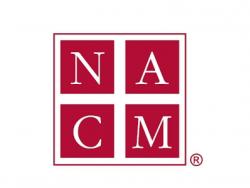
Article: Creating a User-Friendly Court Structure and Environment (NACM 2016)
This publication, from the National Association for Court Management (NACM), encourages the reader to this how the court environment- from the building, to the people, to the technology and resources- can be responsive to the needs and comfort of the publ ...